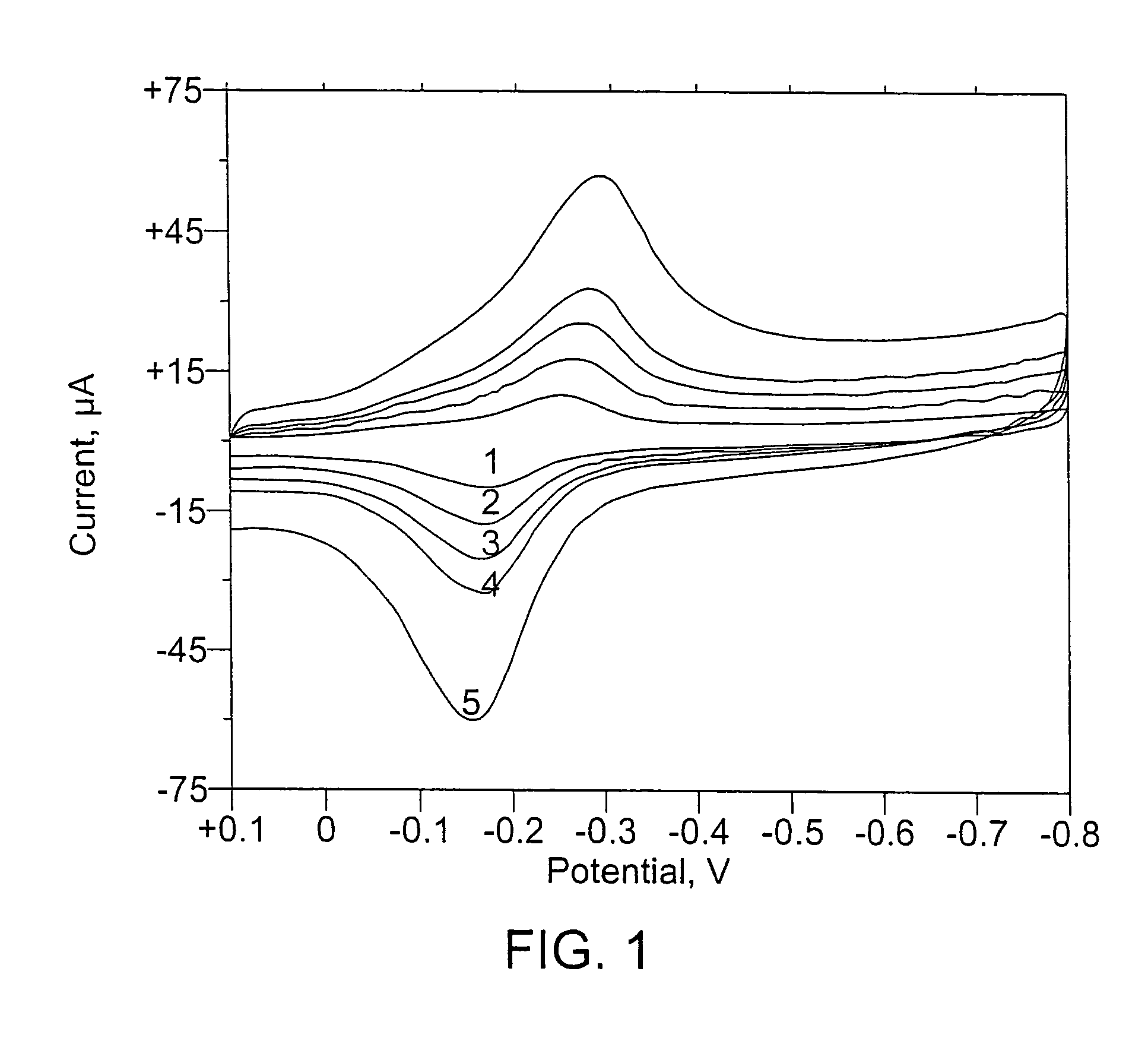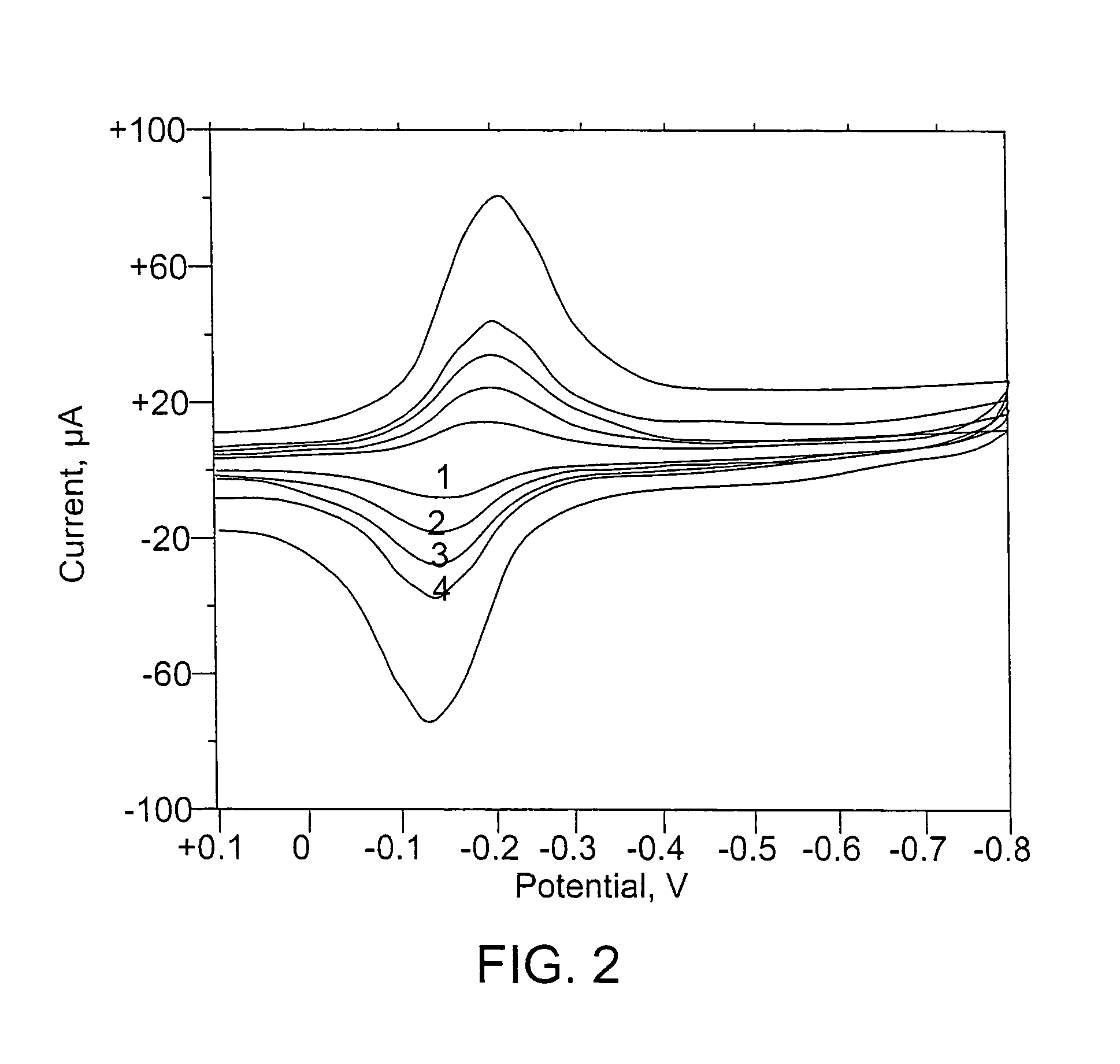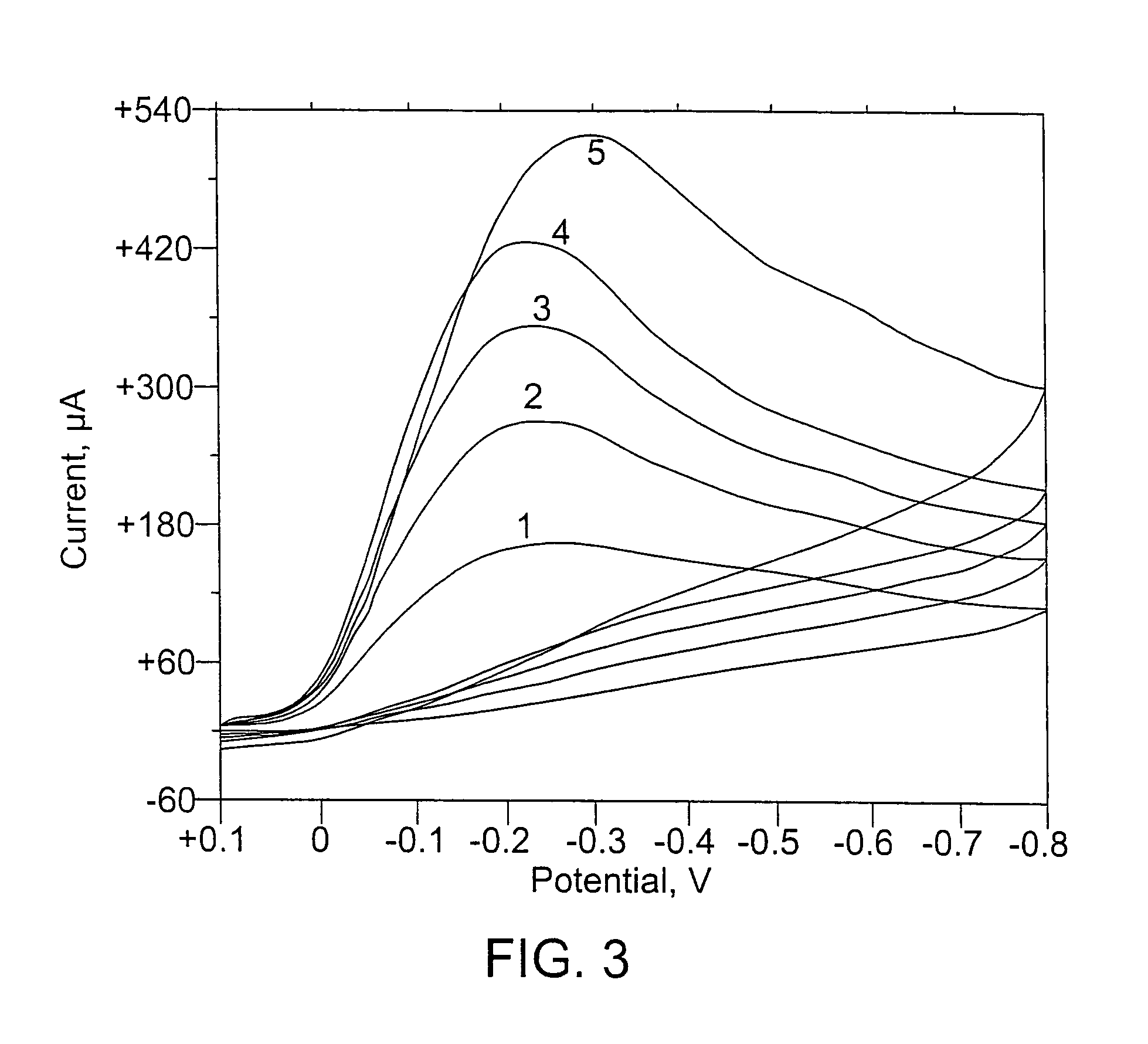Magnetically modified electrodes containing at least one catalyst component that mediates a subatomic particle transfer process
a technology of catalyst components and magnetic modification electrodes, which is applied in the direction of active material electrodes, cell components, electrical equipment, etc., can solve the problems of non non-adiabatic systems susceptible to field effects, and none of these macroscopic effects predict or address properties
- Summary
- Abstract
- Description
- Claims
- Application Information
AI Technical Summary
Benefits of technology
Problems solved by technology
Method used
Image
Examples
examples
[0119]Cyclic voltammetric studies were performed on unmodified electrodes and electrodes modified with either (1) didodecyl dimethyl ammonium bromide (DDAB); (2) DDAB and magnetic particles; (3) DDAB and myoglobin; and (4) DDAB, magnetic particles, and myoglobin. As shown in more detail below, under nitrogen, the voltammetry for myoglobin is unaltered by the presence of magnetic microparticles. In the presence of oxygen, the voltammetry is unaltered by the presence of magnetic microparticles. Under nitrogen, in the presence of a halocarbon, trichloroacetic acid (TCAA), the rate of the myoglobin-mediated reduction of TCAA is accelerated by the presence of magnetic particles over what is observed absent the magnetic particles.
[0120]The electrodes were formed according to the method of RUSLING, Microporous Materials, 3:1–16 (1996), which is herein incorporated by reference, except that magnetic microparticles were incorporated into some of the electrodes by methods known to those skill...
examples 1 – 4
Examples 1–4
Myoglobin Reduction Under Nitrogen or Oxygen
[0122]In Examples 1 and 2, myoglobin was reduced under nitrogen. In this reduction the electron-transfer reaction of myoglobin(III) generates myoglobin(II). Results are shown as a function of scan rate (FIG. 1, no magnets (Example 1); and FIG. 2, 8 (v / v)% magnets (Example 2)). The scan rates for FIGS. 1 and 2 were: (1) 25 mV / s; (2) 50 mV / s; (3) 75 mV / s; (4) 100 mV / s; and (5) 200 mV / s.
[0123]For Examples 1 and 2, there was no change in morphology or relative peak heights upon incorporation of magnetic microparticles. There was no magnetic effect on the reduction of myoglobin. Three replicates were performed.
[0124]In Examples 3 and 4, myoglobin was reduced under oxygen to determine whether there was a magnetic effect on the oxygen carrying or reduction of the myoglobin oxygen complex. It was the ferrous species that carried oxygen. Results are shown as a function of scan rate (FIG. 3, no magnets (Example 3); and FIG. 4, 8 (v / v)% m...
examples 5 – 9
Examples 5–9
Trichloroacetic Acid Reduction
[0143]Several experiments were performed to evaluate the impact of magnetic particles on the reduction of trichloroacetic acid. In these Examples, the electrodes had a surface area of 0.34 cm2. Conditions for the cyclic voltammograms were as follows: Init E (mV) was 300, High E (mV) was 300, Low E (mV) was −1400, Init P / N was N, V (mV / s) was 10, Sweep Segments was 2, Smpl Int (mV) was 2, Quiet T (s) was 2, Sens (A / V) was 1E-4. These Examples were conducted under a nitrogen atmosphere at ambient temperature and pressure.
PUM
| Property | Measurement | Unit |
|---|---|---|
| diameter | aaaaa | aaaaa |
| sizes | aaaaa | aaaaa |
| sizes | aaaaa | aaaaa |
Abstract
Description
Claims
Application Information
 Login to View More
Login to View More - R&D
- Intellectual Property
- Life Sciences
- Materials
- Tech Scout
- Unparalleled Data Quality
- Higher Quality Content
- 60% Fewer Hallucinations
Browse by: Latest US Patents, China's latest patents, Technical Efficacy Thesaurus, Application Domain, Technology Topic, Popular Technical Reports.
© 2025 PatSnap. All rights reserved.Legal|Privacy policy|Modern Slavery Act Transparency Statement|Sitemap|About US| Contact US: help@patsnap.com



